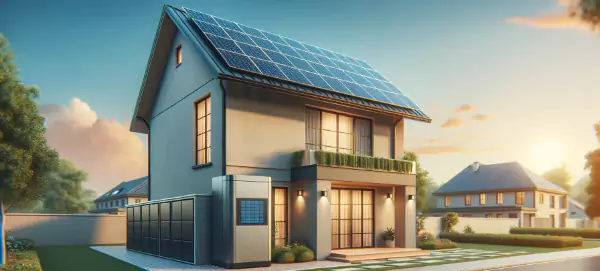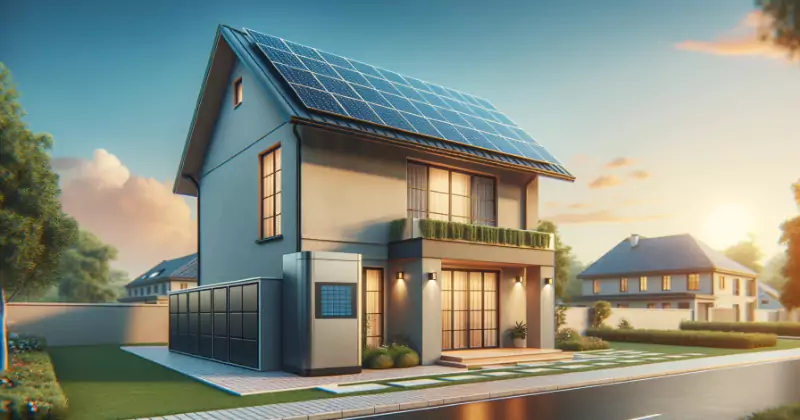With so many different types and brands of solar panels, it can take time to determine which is best suited for your needs. This article will cover some key factors to consider when choosing solar panels.
Solar Panel Warranty
The warranty on solar panels protects buyers from any defects or faults. Warranty periods can vary between brands, but most manufacturers offer a 25-year warranty. It's essential to check what the warranty covers, including the panel's performance and output. The warranty should also cover any issues with the panels' workmanship or materials.
Read more about solar panel warranties in this article on the CEC website: Maintenance and Warranties.
Solar Panel Efficiency
Solar panel efficiency refers to the percentage of sunlight a solar panel can convert into usable electricity. In other words, it measures how effectively a solar panel can convert the energy from the sun into electrical power.
A solar panel's efficiency depends on several factors, including the type of materials used to make the solar cells, the design of the solar panel, the quality of the manufacturing process, and environmental factors such as temperature and shading.
Efficiency is usually measured as a percentage and is determined by dividing the amount of electricity produced by the solar panel by the amount of sunlight that falls on the panel. For example, if a solar panel produces 200 watts of electricity when exposed to 1,000 watts of sunlight, its efficiency would be 20%.
High-efficiency solar panels can convert more sunlight into electricity, requiring less surface area to produce the same amount of power as lower-efficiency panels. This makes them a sensible choice for any situation where roof space is limited.
Power Tolerance
Solar panel power tolerance refers to the acceptable range of power output that a solar panel is rated to produce. It's typically expressed as a percentage and indicates the deviation from the panel's rated power output. For example, a solar panel with a power tolerance of +/- 5% and a rated power output of 300 watts could produce anywhere between 285 watts and 315 watts under normal operating conditions.
The power tolerance affects the system's performance and output. Panels with a higher power tolerance are generally more desirable, as they can produce more power than their rated output. However, panels with a lower power tolerance may still be a good choice if they are more affordable or have other desirable features.
Solar panel power tolerance can be affected by various factors, including temperature, shading, and other environmental conditions. Manufacturers typically test their panels under a range of conditions to determine their power tolerance and may provide different power tolerance ratings for different models or product lines. It's important to understand the power tolerance of any solar panels you are considering for your system and to choose panels that will perform well under the conditions in which they will be installed.
Performance Ratio
A solar panel's performance ratio (PR) is a parameter used to evaluate its efficiency and effectiveness. It is a ratio of the actual energy output of the solar panel to the theoretical maximum energy output, taking into account the environmental and operational factors that affect solar panel performance.
The PR of a solar panel is expressed as a percentage and is typically in the range of 75% to 90%. A higher PR indicates a more efficient solar panel that can convert a higher percentage of solar energy into usable electricity. Factors that affect PR include temperature, shading, dust accumulation, and system design.
The PR specification is a useful tool for comparing the performance of different solar panels. It provides a standardised metric for evaluating solar panel efficiency under real-world operating conditions. A solar panel with a higher PR is generally more desirable as it can generate more electricity over its lifetime, resulting in lower overall system costs and a higher return on investment.
PR is not a fixed specification and can vary over time based on environmental and operating conditions changes.
Temperature Coefficient
The temperature coefficient of a solar panel is a specification that indicates how the panel's performance will be affected by changes in temperature. Specifically, it refers to the percentage change in the panel's power output for every degree Celsius of temperature change. This specification is important because it allows you to predict how the panel will perform under different temperature conditions.
For example, if a solar panel has a temperature coefficient of -0.5% per degree Celsius, its power output will decrease by 0.5% for every degree Celsius increase in temperature. So, if the panel's temperature increases by 10 degrees Celsius, its power output will decrease by 5%. Conversely, if the panel's temperature decreases by 10 degrees Celsius, its power output will increase by 5%.
The temperature coefficient is an important consideration when choosing a solar panel, especially if you live in a region with extreme temperatures. If the temperature in your area regularly fluctuates, choose a panel with a low temperature coefficient to ensure that it performs consistently over time. On the other hand, if you live in an area with relatively stable temperatures, the temperature coefficient may be less of a concern.
Types of Solar Panels
Monocrystalline Solar Panels
Monocrystalline solar panels are made from a single, pure silicon crystal. The process begins with refining silicon into high-purity silicon ingots, which are then sliced into thin wafers using a diamond saw.
Next, the wafers undergo a process called doping, where impurities such as boron or phosphorus are added to create a positive or negative charge. This creates a p-n junction, which is the basis for the solar cell's ability to generate electricity.
The wafers are then coated with an anti-reflective coating to help increase their efficiency in capturing sunlight. Finally, they are connected and sealed with a layer of glass and a backing material to protect the cells from damage.
Polycrystalline Solar Panels
Polycrystalline solar panels, also known as multicrystalline solar panels, are made by melting raw silicon in a furnace and then pouring the molten silicon into a rectangular mould to create a large, solid block. This block is then sliced into wafers using a saw with a diamond blade. These wafers are polished to remove any rough edges.
The wafers are then etched in a chemical bath to create tiny grooves on their surface, which help increase the solar panel's efficiency. Next, a thin layer of anti-reflective coating is added to the surface of the wafers to reduce reflection and increase the amount of sunlight that can be absorbed.
The wafers are then placed onto a conductive grid and covered with a protective glass layer. Finally, electrical leads are attached to the grid, allowing the panel to convert sunlight into electricity.
PERC Solar Panels
PERC solar panels use a passivated emitter and rear cell (PERC) design to increase their energy efficiency. In traditional solar panels, the cells comprise a single layer of silicon, which absorbs sunlight and converts it into electricity. In a PERC panel, however, the cells have an additional layer on the rear side that reflects the light back into the cell, allowing more energy to convert into electricity.
The passivated emitter layer on the front side of the cells reduces the amount of energy lost as heat, and the rear cell design allows for a greater number of electrons to be collected, further increasing the panel's efficiency. PERC solar panels can convert up to 22% of the sunlight they receive into usable electricity, compared to traditional panels that typically convert around 15-17%.
PERC panels are becoming increasingly popular in the solar industry due to their high efficiency and cost-effectiveness. They are compatible with most solar applications, from residential to commercial and utility-scale installations.
Thin-film Solar Panels
Thin-film solar panels use thin layers of semiconducting materials to convert sunlight into electricity. Unlike traditional silicon solar panels, thin-film solar panels can be made with a variety of materials, such as cadmium telluride, copper indium gallium selenide, and amorphous silicon. These materials are deposited onto a substrate, such as glass or flexible plastic, using various techniques, such as sputtering or chemical vapour deposition.
One advantage of thin-film solar panels is that they are much lighter and more flexible than traditional solar panels, making them easier to install and transport. They also perform better in low-light conditions and are less susceptible to shading. However, they typically have a lower efficiency rate than traditional silicon solar panels, requiring more surface area to generate the same amount of electricity.
Thin-film solar panels are commonly used in various applications, such as on rooftops, building facades, and portable electronic devices. They are also used in large-scale solar farms, where their light weight and flexibility make them easier to install and maintain.
Polycrystalline Vs Monocrystalline Solar Panels
The discussion about polycrystalline vs monocrystalline solar panels has been a long-standing debate, especially in Australia. However, the truth is that when comparing the same rated power output, the performance of these two technologies is still the same. The only notable difference is that the most expensive and highest-watt panels on the market are monocrystalline, making them the most efficient.
A more efficient solar panel means you can generate more watts on your roof, which is only advantageous if you need to fit a higher system size. Suppose you can afford a less efficient panel that fits your roof's system size. In that case, there is virtually no difference between mono and poly.
In an article published by SolarQuotes a comparison was made between the Trina Allmax P 275 polycrystalline panel and the Trina Allmax M 275 monocrystalline panel. No difference was found in efficiency or performance ratio when comparing their specifications. The only difference was in their temperature coefficient, where the mono panel performed slightly better. Still, this specification could be more reliable when relying on the manufacturers' measurements. Even if accurate, the monocrystalline panel would only produce 1% more power than the polycrystalline panel at 65°C, which is negligible.
When choosing between mono and poly, select a reliable brand with an Australian presence, good warranties, and a high-performance ratio.
The Clean Energy Council's List of Approved Solar Panels
The Clean Energy Council (CEC). is a non-profit industry association representing Australia's clean energy sector. As part of its role, the CEC maintains a list of solar panels that are approved for use in Australia's Small-scale Renewable Energy Scheme (SRES).
The SRES is a government program that provides financial incentives for installing small-scale renewable energy systems, including solar PV systems. Solar PV modules must meet certain standards to be eligible for the scheme, including being tested and approved for safety and performance.
The CEC's list of approved solar PV modules is based on rigorous testing and certification procedures that ensure the modules meet these standards. Specifically, the modules on the list have been tested for fire safety, an important consideration for rooftop solar installations.
To be included on the CEC list, solar PV modules must have been tested by an accredited testing laboratory and meet the requirements of the Australian Standard AS 5033:2014 for the installation of photovoltaic (PV) arrays. The modules must also meet the requirements of the Clean Energy Council's module validation program, which includes testing for power output, durability, and other performance characteristics.
By choosing solar PV modules from the CEC's approved list, consumers can be confident that they are investing in high-quality, safe, and reliable technology that meets the requirements of the SRES.
Conclusion
Choosing the best solar panels can be challenging for those of us who are not qualified to make sense of all the technical electrician jargon. You can't go wrong if you stick to the well-known big brands. Some of the top panel brands in 2023, according to the pros, are:

